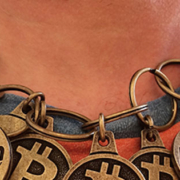Are STOs the New ICOs?
By: Jon Avidor, Jaclyn Wishnia and Kristen Kennedy
As the SEC continues to crack down on noncompliant ICOs and token exchanges, many investors and crypto developers are expected to embrace the trend of adopting security token offerings, or STOs, due to the surer regulatory framework in which they operate. Though it’s possible to issue ICOs that conform to SEC guidelines, the use of STOs provides issuers with several advantages over ICOs. Indeed, experts forecast that ICOs will ultimately play a minor part in the blockchain ecosystem, while STOs will become the primary investment vehicle. Which begs the question: what exactly are STOs?
“All STOs are ICOs, but the same isn’t true the other way around.” Unlike ICOs’ user participants, STOs are token offerings made to accredited investors “who pay and receive a security,” such as equity, stock shares, derivatives, etc. Initially, issuers of ICOs had to decide whether to classify a token as a security or a utility, which could have major regulatory implications and potentially expose them to liability. However, because the tokens issued in an STO are already labeled as securities, the offering automatically falls under SEC regulations. Thus, STOs must comply with securities law, including AML/KYC rules, and therefore, provide “liquidity, traceability, and accessibility,” at least within the U.S.
The fact that STOs are definitively regulated makes them less susceptible to scams and vests them with greater credibility than ICOs. For instance, because “STOs are subject to federal security regulations, one of the regulations they need to follow is Regulation D.” Within Regulation D, there are particular rules pertaining to offer limit amounts, the ability to use general solicitation, and investor requirements (i.e., Rule 506(b), Rule 506(c), and Rule 504). These rules require that investors must be accredited, information used to solicit cannot be “false or misleading,” and issuers must continuously verify that tokens are not resold to non-accredited investors. If those regulations had initially applied to ICOs, problems like “pump and dump” schemes and “front running” might have been avoided.
Although one of the primary benefits of STOs is that they provide clearer legal standards and protections, “STOs are regulated according to the jurisdiction in which they are based.” This presents issues of comity, potential trade agreement problems, unfair competition law, lack of uniform standards (or in some countries, no relevant laws at all), foreign tax reporting requirements, and assessing other various security laws associated with the jurisdiction where the STO will be offered. What began as a contained problem—labeling STOs under U.S. law—could become an international dilemma, by having to thoroughly ensure STOs adhere to other countries’ securities laws and practices.
Also, in relation to jurisdictional issues, being subject to another country’s laws and rules means its governing authority will have centralized control over all filed paperwork and information associated with a company’s STO, including its participants. These procedures run contra to the spirit of decentralization, one of the tenets that blockchain and cryptocurrencies were founded upon, and could pose potential privacy or data problems. Additionally, since these technologies remove the component of an intermediary, the duties attached to financial regulations, e.g., “underwriting, preparation of marketing materials in accordance with rules, and high levels of security,” will shift the burden directly to the buyer or seller of the STO, who will then have to remain compliant, as opposed to allowing traditional financial institutions to assume the responsibilities. This could drive up costs for companies, rather than aid them in saving resources.
Regardless of these issues, the STO space is currently seeing high levels of activity and innovation. For example, LXDX, a high-speed cryptocurrency exchange, will become one of the first companies to issue stock through an STO this December. Investors will be permitted to purchase LXDX’s cryptocurrency tokens, which represent direct ownership in the exchange, complete with dividend rights. Investors will be permitted to purchase LXDX’s cryptocurrency tokens, which represent direct ownership in the exchange, complete with dividend rights. This represents an exciting development in this space. On one hand, the regulatory framework which applies to STOs ensures compliance and legitimacy and reduces security risks and legal liability. On the other hand, stricter regulations impede innovation, reestablish the challenges that start-ups face to raise capital, and return the finance marketplace to the status quo, which begs the question: why alter traditional methods in the first place? LXDX’s launch of its new STO exchange may provide a model as to how other STOs might operate in the future, and will hopefully help to move the industry forward in a way that brings STOs closer to worldwide acceptance.
***
We would like to thank our interns Jaclyn Wishnia and Kristen Kennedy for their contribution to this article.









